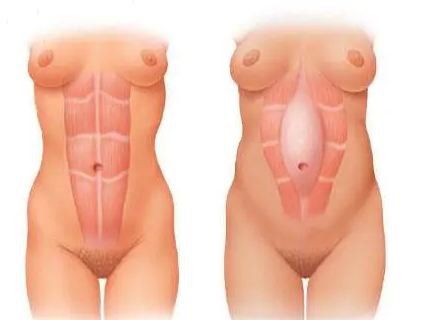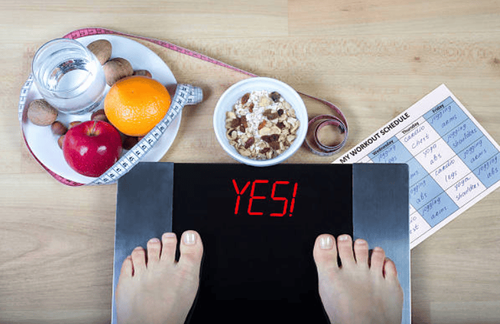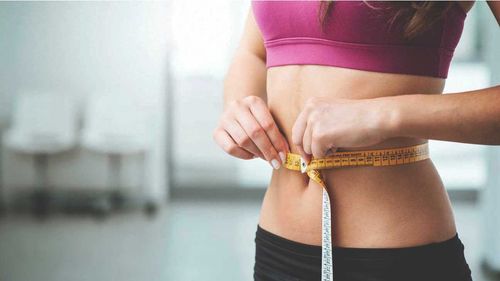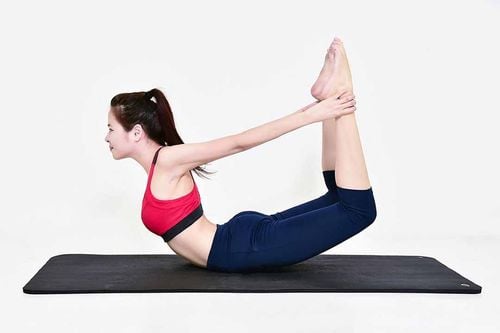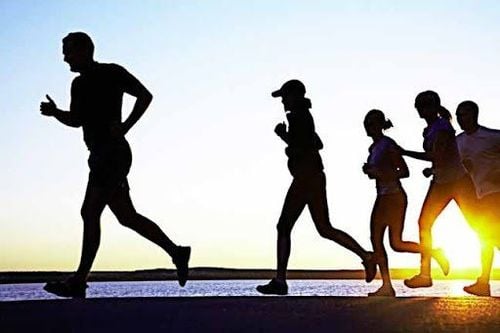This is an automatically translated article.
Muscles, muscle groups, especially the core muscles of the human body, play an important role in influencing the formation and balance of posture. In fact, you're using your core muscles for every day activity, whether it's pushing the shopping cart in the supermarket, cleaning the house, or polishing your shoes...Exercise with exercises Training at different physical levels will greatly contribute to keeping these muscles strong, thereby helping to stabilize your body, support your spine and increase fitness.
1. Core muscles of the body
Nowadays, many people think that the core muscles are big muscles like the abs or glutes, which may be why most people often focus on exercises to develop muscle groups above. However, the goal of maintaining strong core muscles is far more valuable than achieving a six pack abs or toned glutes.
Core muscle or core area includes 35 muscle groups located in the center of the body (abs, hips, low back). They have the main task of rotating the body and synchronizing the musculoskeletal system, and they also create connections with muscle groups in the upper and lower body.
Core area includes the following major muscles:
Back (spine erector) muscle: A muscle located in the back that extends along your torso. It is responsible for helping the body stay upright after bending, as well as bending the body to the sides and turning the head. The rectus abdominis: Helps perform the forward bend. This is the muscle group that creates the “six pack” on the abdominal wall. Abdominal obliques: Consists of the internal obliques and the external obliques, which help rotate or flex the body. Transverse Abdominal Muscles: Wrap around the front and sides, helping to stabilize the pelvis. Multifidus: A group of muscles that support the stability of the spine. Other muscles that make up the core area include:
Muscles located in the pelvic floor. Diaphragm . Buttock muscle group. The muscles attached to the pelvis (the hamstrings, the hip flexors, and the levators).
2. Basic exercises for all levels
2.1 Beginner Level If you are a newbie or have been out of the gym for a long time, you should start at the beginner moves.
You should also consult with a personal trainer, you can talk with them about training times, levels and your personal goals
During the exercise, you will see the movement " squeeze your abs” – So how do you know you’re actually doing it right?
Start with an inhalation, then imagine you are pulling your navel towards your spine. Then, hold the muscle firmly in that position for a few seconds. The abdomen will feel tight, which is exactly the movement that helps to engage or tighten the muscle groups in the abdomen.
Bridge Pose
This pose activates the glutes and lifts the hips, helps train the core while toning the buttocks and thighs.
Perform the movement:
Step 1: Lie on your back on the floor, with or without a yoga mat underneath, keep your back straight and extend your arms to the sides. 2 feet on the floor, 2 knees bent to bring 2 feet close to the buttocks. Step 2: Tighten your abdominal muscles and glutes. Step 3: Lift your hips up to form a straight line from your knees to your shoulders. Step 4: Hold in this position for 10-30 seconds, then lower your body to the original position Step 5: Repeat the movement 3-5 times
Crunches
Crunches are a classic core-strengthening move. This move mainly uses your abs to lift your upper body.
If you have low back pain, do crunches carefully by moving slowly and should start with a few movements.
If your low back pain is persistent, talk to your trainer or doctor before doing this move.
Perform the movement:
Step 1: Lie on your back on the floor, bend your knees 90 degrees and place your feet on the floor with hip width. Cross your arms in front of your chest, or across your ears, or behind your neck. Step 2: Tighten your abs and relax your neck and shoulders. Bend your chin and lift your shoulders up, keeping your lower back, buttocks, and feet on the floor. Hold that position for about 1-2 seconds. Step 3: Lower your shoulders slowly back to the starting position. Step 4: Do 1 set with 8-12 reps.
Spine toe tap
This is a basic weight loss exercise ( Pilates ) that helps support the core muscles through the work of the glutes, hips and legs.
Touching your toes also puts minimal pressure on your fever column. For those with back pain, this move is an ideal alternative to crunches.
Perform the movement:
Step 1: Lie on your back on the floor, raise your shins and knees to form a right angle. Place your hands along your body and palms facing the floor. Step 2: Tighten your abdominal muscles. Lower your right leg and gently touch the floor while keeping your left leg still, back straight. Step 3: Raise your right leg to the starting position. Step 4: Repeat the movement with the other side. Step 5: Do 1 set with 8-12 reps.
Bird Dog
Bird dog is a exercise for both abs and back muscles, so this is the ideal core strengthening movement. This move requires your coordination, balance, and stability.
Perform the movement:
Step 1: Put your hands on the floor, hands facing forward, bend your knees so that your shins and thighs form a right angle. Step 2: Tighten your abs, bring your left hand in front, palms facing in, and lift your right leg up and parallel to the floor. Step 3: Hold in that position for about 30 seconds. Step 4: Repeat the movement with the right hand and left foot. Step 5: Do 1 set with 8-12 reps.
Bicycle crunch
This move is developed from a regular crunch, working your obliques, rectus and hip muscles.
Perform the movement:
Step 1: Lie on your back on the floor, bend your left knee and pull it towards your chest. Keep your right leg straight and slightly lifted off the floor. Place your hands behind your neck or behind your head. Note, should not pull the neck when performing this movement. Step 2: With your left knee pulled toward your chest and your right leg straight, lift your right shoulder off the floor and move your right elbow toward your left knee. Step 3: As you bring your right shoulder back to the floor, straighten your left leg while simultaneously bending your right knee and pulling it toward your chest. Step 4: As the right knee moves towards the chest, lift the left shoulder off the floor and move the left elbow towards the right knee. Step 5: Perform 3 sets with 12 reps.
2.2 Semi-Professional Level As your fitness gets better, keep building your muscles with semi-professional level workouts.
Plank
Plank is a full-body workout that targets your core, strengthening your arms, shoulders, back, glutes, and legs.
Perform the movement:
Step 1: Start in a crawling position, then put your elbows on the floor so that your arms are perpendicular to your forearms. The two can be interlaced by hand. Step 2: Straighten your legs back, keep your feet hip-width apart, tighten your abs. Step 3: Hold the pose for about 30-60 seconds. Step 4: Repeat 3-5 times.
Warrior crunch
Another variation of the traditional crunch, which strengthens the core and lower body including the thighs and glutes.
Perform the movement:
Step 1: Stand with your feet wider than shoulder width and toes facing out. Put your hands behind your head and puff your chest out. Step 2: Tighten your abs and glutes, bend your knees until your thighs are parallel to the floor. Step 3: Bend the torso to the side, move the right elbow towards the right thigh, repeat with the left Step 4: Perform 1 set with 8-12 reps
Bird dog with elbows to knees
The move evolved from the usual Bird dog move, requiring a dynamic combination of abdominal and back muscle movement to improve core mobility. Do the movement:
Step 1: Put your hands on the floor, hands facing forward, bend your knees so that your shins and thighs form a right angle. Step 2: Tighten your abs, bring your left hand in front, palms facing in, and lift your right leg up and parallel to the floor. Step 3: Bring your right knee and left elbow back, then return to the starting position. Step 4: Do 1 set with 8-12 reps Step 5: Repeat with the opposite side
2.3 Advanced level Once you've mastered the advanced level moves, challenge yourself with advanced level exercises. These exercises will continue to build core strength with more complex movements.
Mountain climbers
This exercise combines plank with knee motion, so it's a great move for balance and core strength.
Do the movement:
Step 1: Start in a crawling position, then put your elbows on the floor so that your arms are perpendicular to your forearms. The two can be interlaced by hand. Step 2: Straighten your legs back, keep your feet hip-width apart, tighten your abs. Step 3: Raise your right knee toward your chest, keep your back straight, and lower your hips. Step 4: Bring the right stool back to the original position while lifting the left knee towards the chest. Step 5: Continue the movement and switch legs. Do 1 set with 8-12 reps.
Hip Rotation Plank
This exercise is an advanced version of the Basic Plank, which strengthens your arms, glutes, and obliques by combining a rotation plank with an arm movement.
Perform the movement:
Step 1: Lie on your right side with your right forearm under your shoulder, arm perpendicular to your forearm. Place your left foot on your right leg and tighten your abs. Step 2: Raise your hips so that your body forms a straight line. Lift left arm vertically upwards. Step 3: Rotate your torso towards the floor and return your left arm to the starting position. Step 4: Repeat with the opposite hand. Do 1 set with 8-12 reps.
Turkish get-up combination exercise
This is a total mental movement exercise, which is a great way to increase spinal stability as well as improve mobility of the hips, lumbar spine and spine live your chest. This exercise is also great at strengthening the abdominal muscles around your spine as well as your shoulders.
Try this move once or twice without weights, then start with light weights to make sure your shoulders are strong enough to lift the weights overhead. Use weights with increasing volume when you have mastered the movement
Perform the movement:
Step 1: Lie on your back, legs straight and arms tilted at a 45 degree angle. Step 2: Bend your right leg and place your foot on the floor, a few centimeters from your buttocks. Step 3: Bring your right arm straight up, grab the dumbbell with your right hand and keep your knuckles up toward the ceiling (this helps stabilize the shoulder). Step 4: Focus your gaze on the dumbbells and keep the weights above your shoulders throughout the movement. Step 5: Push your right heel and left elbow to support your left elbow, making sure your chest is facing forward, not skyward. Step 6: Push the left hand on the floor and push the body to a sitting position, the movements must be done mainly by the abdominal muscles. Step 7: Bring your left leg back, resting on your knee. Make sure that your left knee and ankle are in line with your left hand. Step 8: Switch to a kneeling position with your left knee and right foot on the floor, and at the same time remove your left hand from the floor. Step 9: Keeping your right arm overhead, push your right foot up onto the floor and bring your left foot forward, as if you're doing a shrug. At this point, the body will return to the standing position. Step 10: Do the opposite movement until your back is on the floor. Step 11: Perform 3-5 times.
Whether you're looking to kickstart an exercise routine or simply add some motivation to your daily routine, core-strengthening moves are a great place to start.
Talk to your trainer or doctor before starting a new exercise routine. If you have sports injuries in the past, consult a professional for guidance on effective and healthy exercises.
Follow Vinmec International General Hospital website to get more health, nutrition and beauty information to protect the health of yourself and your loved ones in your family.
Please dial HOTLINE for more information or register for an appointment HERE. Download MyVinmec app to make appointments faster and to manage your bookings easily.
Reference source: healthline.com



